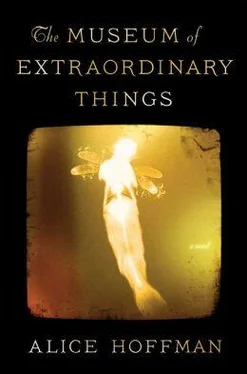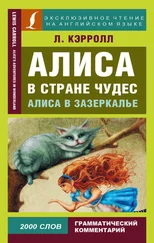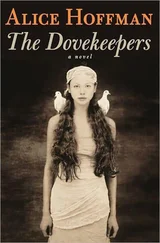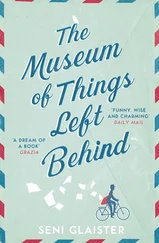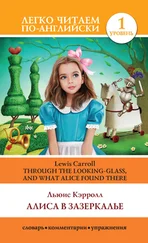Certainly I’d been blind when it came to Levy’s poor health and age. He’d told me of his bouts with pneumonia, which had weakened him, but he had such passion for his work I forgot how ill he was and ignored his labored breathing. I often accompanied him to meetings at 291, the gallery where Stieglitz showed photographs alongside paintings that seemed to come from a far-off universe, each unique and haunting. I stood in the back, an awkward apprentice, listening to the real photographers argue and talk. Once Moses went to shake Stieglitz’s hand and introduce himself. Stieglitz of course knew of him, although the rumors were that Moses Levy was dead. He had disappeared from the art world and from his compatriots. Perhaps he preferred these stories to the truth, and wished to keep secret the fact he made a living photographing brides and grooms at the marriage halls of the Lower East Side. His great work had been destroyed by officials in the Ukraine, who felt that Jewish artists were dangerous, rebels by nature, untrustworthy at best, demons at worst. He could not bring himself to think, let alone speak, about his lifetime’s lost work.
“Here’s one of the originals,” Stieglitz called out to those in the gallery. “One of our forefathers!”
Few paid attention. The mantle of genius had already been handed to younger men, such as Stieglitz himself, who quickly moved on to speak to his own admirers. Now Levy’s great work had been burned and forgotten, and there was little interest in him, even though many of his techniques had been taken up by these same young men. He was a master of the ambrotype print, in which the photographer is the conduit to the photograph, so that each is as individual as a painting, and later his use of silver nitrate or potassium cyanide to illuminate his landscapes had led the way for those who wished to take photography into the world of art. He had a unique toning technique that tinged some of his prints a golden color. Many of the younger men who gathered to speak of themselves and their work had no idea Levy had invented some of the processes they now used on a daily basis, nor did they care. I saw this was the way of the future, to leave the past behind as if it were a dream.

On the wall of Levy’s studio were the two remaining prints taken in the forests of the Ukraine. Trees so tall and wide they were true giants, their limbs saddened by the sorrows of the world, filled with the sepia shades of songbirds. It was much like the place where my father and I had camped when our village was destroyed. I had led him by the hand through the tall grass and the wild asters so that he would not lose himself and give up the life he no longer valued now that my mother was gone. We did not speak to each other in the forest, for fear of what we would say. We mourned in silence so that we would not curse the world we walked through. I saw owls in the locust trees and wondered if these creatures were the spirits of the dead, for there were so many murdered in our homeland there was not room enough for all of their ghosts. I half-believed they had turned into birds instead.
Moses Levy left me his lustrous silver nitrate prints. I had them on the wall of the studio, in frames I’d built myself of plain pine, for this cheap wood was the best I could afford. But the photographs hadn’t been treated properly in Moses’s travels across the continents, and they faded more each day. To avoid the ravaging effects of direct sunlight, I took to covering them with a white sheet, as people of the faith I’d left covered mirrors after a death in the family. I once believed this practice had arisen to make certain there was no vanity in a time of sorrow, but now I think it was so a man could not see his own hopelessness reflected in the glass.
Sometimes as darkness fell, I tore off the sheets so I could study the gift Moses had left me. The trees became illuminated in the fading light, struck by shades of yellow on some days, and at other times enveloped by the red glow that pours over Manhattan after sunset. When I stood there before the greatness of my teacher’s vision, I was reminded of the day I found my second life. I thought perhaps I did indeed have a purpose, and that purpose was to see the true beauty of the world and, like my teacher, to capture a single moment of that beauty.
And yet I was blinded to so much around me, stubborn and arrogant in the way many young men are. Could a blind man know beauty? I hadn’t noticed the milky film over my teacher’s eyes, nor had I realized the difficulty he had in taking the stairs in his last months on earth. To me he was indomitable, an icon who was more than human in both talent and virtue. I toted his equipment, as any apprentice would, but soon I was developing his negatives as well. He said it was so I could learn the skill of this process, but it was most likely he had me do this work because he could not stand steadily for more than a brief time. There were a few occasions when he was too tired to leave his bed, and I was forced to take wedding photographs alone. I’m sure the bridal parties were not pleased by my sour demeanor, but I did the job and learned to keep my mouth shut. I did not tell anyone to smile or to embrace—I photographed them as they were, delighted or terrified, brides who seemed too young to be married, and those who were grandmothers, grooms who shook with fear and those who rode triumphantly into the hall on the shoulders of their brothers and friends. There were occasions when my photographs were rejected by an angry bride or mother of the groom. I didn’t blame them. I showed them what I saw, and what I saw was not always pretty.
I did not realize that Moses’s death was coming until my teacher could no longer stand or speak. On the day of his passing, I was the one who found him. I slept in a storeroom then, and he in the bed that later became mine. Everything in the loft changed when his spirit left him, as if a whirlpool had drawn the light from the room. I sat beside his body and wept, not only for the loss of this great man but also for the darkness that settled upon me once more.
I was the only one at the funeral at the Mt. Zion Cemetery in Maspeth, Queens. I hired a rabbi who went from cemetery to cemetery for a fee. He was an old man from Russia, who owned a single suit that he wore every day. There was sorrow in the seams of his clothes, but he was used to death. It seemed that life was a bolt of cloth to him, and he was there to fold it and set it in a drawer. He said the prayers over the open grave, then, after being paid, quickly went on to his next appointment. I shoveled the dirt onto the coffin, as was the custom of our people, while the gravediggers looked on, arms folded across their chests. In our faith we are instructed to bury our own, and in doing so grant them that last favor.

I could not completely rid myself of my first life, though I tried my best. On several occasions I went to photograph rallies and strikes, sent there by the editors I sometimes worked for. This was not by choice. I gave excuses, and I often managed to get other assignments. But occasionally I was forced to go to events I dreaded. Though I looked nothing like the boy I’d been, there were times when I was spotted by ghosts from my past. Once I’d gone to photograph a meeting of hundreds of shirtwaist strikers in Washington Square. This park had once been a public gallows, with bodies still buried beneath what were now paved paths; it seemed as good a place to be haunted as any. Just as I turned onto Great Jones Street, I found I could go no farther. I felt a chill spreading through my chest. There, among the strikers who held up signs in Yiddish and Italian, I thought I saw my father. I dodged into a doorway, as if I were a common thief, and from those shadows I peered out at the crowd. Upon closer study, the person in question was revealed to be someone else entirely, a much younger man than I’d initially imagined, perhaps the age my father had been when I first began to work for Hochman. I felt an odd mixture of relief and disappointment, for in all honesty, I wanted to see for myself that he was alive and well. In a haze of emotion, I realized that my resentment as a boy had arisen not only from the idea that he was willing to end his life and leave me when he leapt from the dock but from the fact that I felt, from that moment on, responsible for him. I was too young, or foolish, or headstrong to meet that responsibility. I did not want it, and I paid for my choice dearly simply by knowing the sort of man I’d become.
Читать дальше
